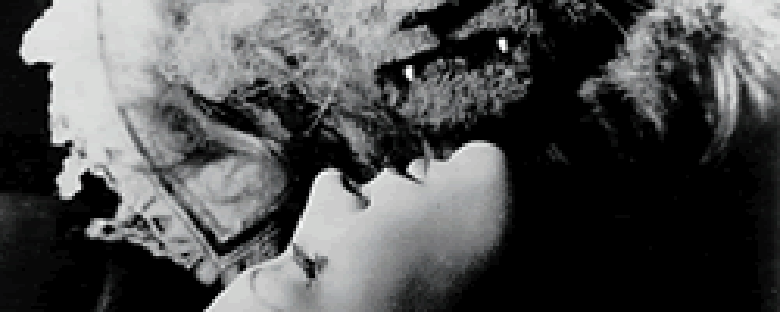Reviews
La Belle et la Bête
Jean Cocteau
France, 1946
Credits
Review by Rumsey Taylor
Posted on 10 July 2004
Source The Criterion Collection DVD
Jean Cocteau’s 1946 Beauty and the Beast affords certain interpretations based on the director’s background as a poet: it is an artist working in a medium with which he is secondarily familiar, and thus assumes an aesthetic bias. As Cocteau properly retains in his diary of the film’s making, Beauty and the Beast has the structure of a poem, its inherent ambiguity, moral narrative, and visual emphasis.
The film is given an introductory disclaimer, stating the inherent strength of a child’s imagination, a strength that diminishes in age. Cocteau demands this childish hope in viewing his film. To his credit, Beauty and the Beast is a timelessly inventive vision, and his disclaimer is unnecessary. Though it is disserved by a loss of interest in both its age and replacement (by the Walt Disney animated musical), it has singular, independent images of great beauty.
Cocteau’s distinguishing opera is a series of three films, deemed the “Orphic Trilogy”; each entry provides static examples of reality and fantasy and the crossover between them: in Blood of a Poet (1930) a character in a painting becomes real, in Orpheus (1949) a man consciously enters his dream, and in Testament of Orpheus (1959) Cocteau enters his own vision as a character in the film. Beauty and the Beast is befitted with this consistent theme in Cocteau’s library (its source fiction is Mme. Leprince de Beaumont’s 18th century fairy tale), balancing a generically shot opening with the magic of the Beast’s castle. As the film progresses, its vision becomes further imaginative.
An early scene displays the transitional exit from reality: a wealthy merchant embarks through a dark forest, and arrives, by accident, at a strange castle. He dismounts his horse (the steed is drawn towards a stable with doors that open automatically) and enters the dark stone. His entrance is visually unique: as he proceeds through a dim corridor chandeliers — held by living human arms protruding from the wall on either side — ignite, patiently lighting his next step. (The lengthy shot was done in reverse.) He sits by a fire, to either side stone columns with animated human faces.
There are many shots in the film such as this that in their primitive construction fail to obscure their making, yet are persistently unique for their irregularity. Most every frame of Beauty and the Beast has some fantastic, created element, opening with title credits written on a chalkboard, ending in the Beast’s elaborate transformation into a prince.
This thoroughly vile Beast becomes aware of and insulted by the merchant when he plucks a rose for one of his daughters. His punishment for stealing one of the Beast’s roses — his most favorite items in his great wealth — is death. The Beast, favoring romantic potential, gives the merchant the option to replace himself with one of his three daughters and three days to decide. His youngest and most complacent daughter is Belle, responsible for requesting a rose and in effect her father’s conviction. She exits in secret to replace her father in overwhelming shame.
Belle is a volatile human element that disables the Beast’s dehumanistic regard. She will live as a prisoner, with abundant leniency, in the Beast’s castle. The two are components of a mutual relationship, separated only by the Beast’s hideous countenance — which even Belle’s purity fails prohibit tangible judgment.
The central romance in Beauty in the Beast is an archetype seen in dozens of films; Sir Christopher Frayling, in his commentary for the film, cites such dissimilar examples as King Kong and Edward Scissorhands. Though it is not the superlative rendition, a title I would grant Mme. Beaumont’s fable, Beauty and the Beast is nonetheless a persistently innovative film of great invention, hindered little by its age.
We don’t do comments anymore, but you may contact us here or find us on Twitter or Facebook.



